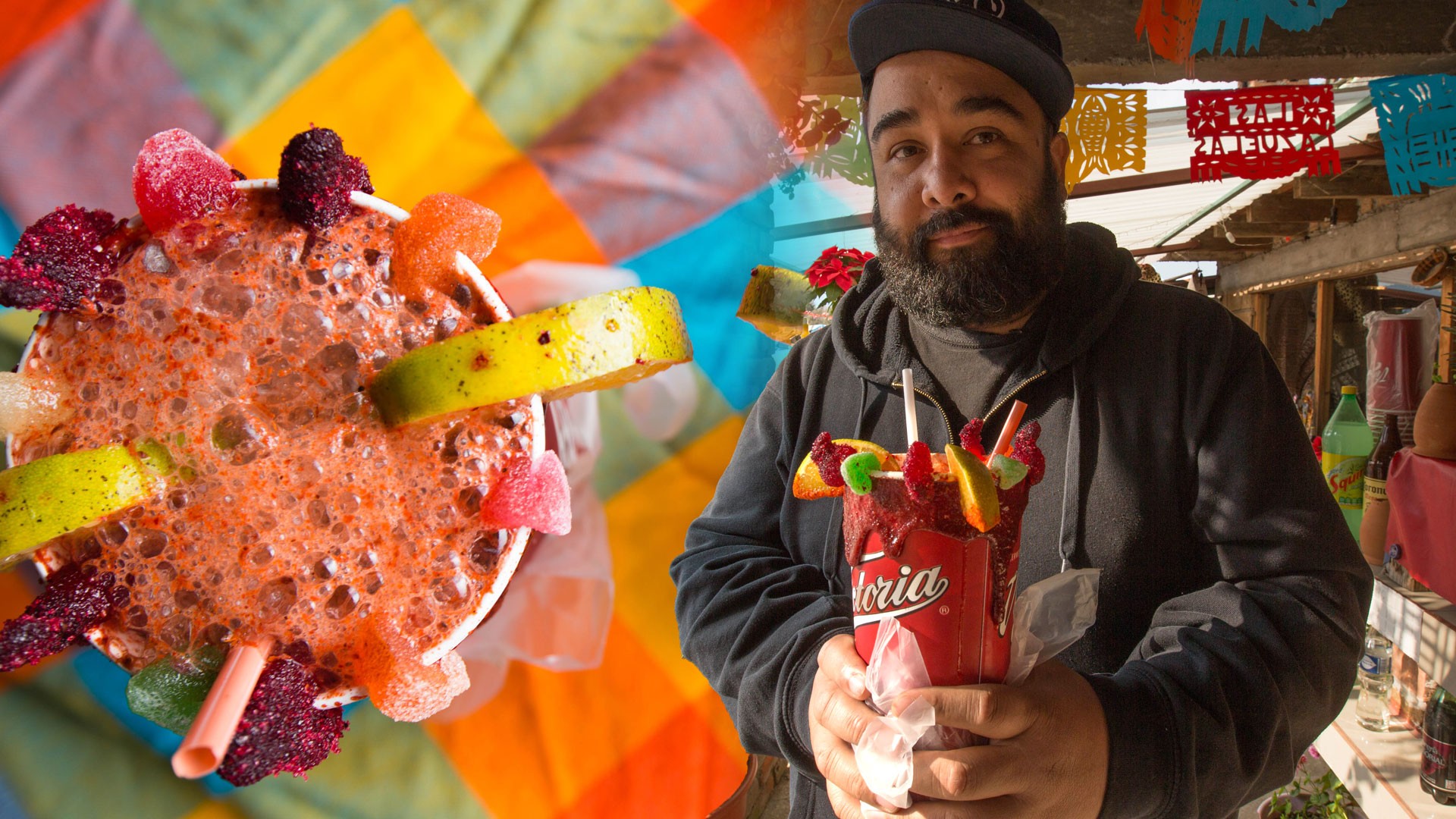This article originally appeared on MUNCHIES Mexico.
Mexico City is a great place for street food. No matter which direction you turn, you'll find a food stand selling gorditas (stuffed cornmeal patties), pambazos (a chorizo and potato sandwich dipped in a spicy guajillo chile sauce) and quesadillas. And of course, there are tacos galore, but we'd like to talk about garnachas for a second. Garnachas are any street food that has a corn base and is fried on a griddle in oil or butter. They're perfect after a night of drinking, if maybe you need something a little more solid than a taco.
Advertisement
We went in search of the city's best street stalls and small shops that serve up night-time garnachas—so you'll always have a reason to stay out late in the CDMX.
Garnachas at the San Camilito Market
Advertisement
Sopes de la Güera at Héroes del 57
Advertisement
WATCH: MUNCHIES Guide to Mexico: La Marquesa

Drowned flautas in El rey de la Ahogadas
And to think that this spot was born in 1963 as a rotisserie. Over time, they introduced Mexican snacks to make up for the decrease in the consumption of chicken that happened in the 90s with the signing of NAFTA and the arrival of gringos' fast food restaurants. If someone had told Laura, the owner, that flautas, the last garnacha on her menu, would be what would keep her business afloat, she wouldn't have believed them.
Fried quesadillas at Antojitos Mexicanos Angie
Advertisement
"And why do they quesadillas look like empanadas?" I ask after noticing that the snack isn't made as a folded over tortilla. Instead, the raw masa (dough) is submerged in the boiling grease before being filled. In order to add the fillings, you have to open the quesadillas with a knife. "Because they're fried quesadillas, and they're not from Veracruz, where they're called empanadas," they reply.
Pambazos at El Pambazo Loco
"My mom always sold them like this, different," Paty tells me. "She started with fried pork, ground beef, potatoes, shredded pork… that was more than 37 years ago. When we wanted to experiment, so that we'd be different from others, we tried skirt steak, ribeye, salmon, pork loin, shredded pork. The new one is the vegetarian, a pambazo with a Portobello mushroom, stuffed with cheese or with tuna. Exquisite."
Advertisement
For the pressed fried pork pambazo, Paty first seasons the meat directly on the press. For a better flavor, she adds a tablespoon of her pozole, which, it should be mentioned, has won many contests. Once she stuffs the bread and dips it in the salsa, she introduces it to the oil for frying. Afterward, she finishes it off with lettuce and sour cream. From the first bite, this snack fills the mouth with a burst of flavor.
Tostadas de guisado at Bucareli and Artículo 123
Today, Garcia's clients are employees of nearby hotels and casinos, some old-school journalists, lost mariachis, weekend drunks, and graveyard shift workers in Colonia Juárez and from Reforma Avenue.
At first glance, the tostadas don't raise any expectations, and that's why they're such a great surprise. Get the stuffed chile tostada: the chile guards a melting filling of panela cheese, which ooze out onto the bed of rice it's served on. It's not spicy at all, which means you can try the myriad salsad they have on offer. Chase it all with a coffee, and then you're ready for your next bout of drunkenness.
Advertisement
Gorditas de Sevilla
The go-to move here is to get one of the specials, which are a riff on the classic garnacha that ends up being somewhere between a taco and a gordita. There's the Azteca, which combines carnitas, cheese, and pineapple, with a mini-garden of cilantro and onion. Or the Chilanga, which combines carnitas with a riot of other meat. Finish your gordita with one of the salsas in enormous molcajetes out front—the chile morita one is so good that it'll stop an impending hangover in its tracks.
